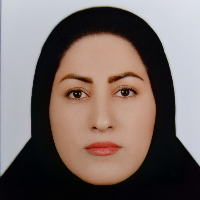Analysis of the Scientific Cooperation Network of Ontology Researchers Using Social Network Indicators and Examining the Degree of Correlation Between Centrality Indicators and Researchers' Productivity and Efficiency
This study aims to analyze the scientific cooperation network of ontology researchers using social network indicators. It also investigates the correlation between centrality indicators and the productivity and efficiency of researchers in this field.
The present study is an applied research project that utilizes scientometric techniques and indicators. The social network analysis method was employed to illustrate and analyze the scientific cooperation network in the field of ontology. In order to retrieve the outputs related to the field of ontology, a search was conducted for the term "Ontolog*" in the title and subject fields of the Web of Science database from 1990 to July 2, 2021. The search strategy used is TI=(Ontolog*) OR TS=(Ontolog*). In the next step, the recovered findings were limited to research conducted in the fields of computer science, information science, and librarianship. This is because ontology is a subject that is also used in other fields such as philosophy, religious studies, biology, and so on. Despite the fact that the concept of ontology in this research is "a tool that specifies the concepts of the related field, their characteristics, and the relationships between concepts and characteristics, thereby increasing the semantic interaction between documents and sources to process complex, advanced, and text-sensitive questions." Among the retrieved data, original articles, conference articles, review articles, and editorials with more credibility were selected. In the end, 29,611 research articles were obtained. The retrieved records were entered into VOSviewer version 16.6.1 software for matrix design and visual map design. To standardize the names, Gephi software was used. The matrix designed in Gephi software was then imported, and micro-indexes of social network analysis were calculated. These measures included degree centrality, closeness centrality, betweenness centrality, and eigenvector centrality. The calculation of macro indicators for the co-authorship network in the field of ontology outputs was also performed using the UCINET software. To test the research hypotheses, SPSS software Version 24 was utilized. Due to the non-normal distribution of the data, a non-parametric test (Spearman's correlation) was used to test the hypotheses.
Examination of the four measures of centrality, which include degree centrality, closeness centrality, betweenness centrality, and special vector centrality, revealed that Pascal Hitzler from Kansas State University, USA; Stefano Borgo from the Italian National Research Council; Jeff Z. Pan from the University of Edinburgh, Scotland; Stefan Schulz from the Medical University of Graz, Austria; Barry Smith from the University of Buffalo, USA; Nicola Guarino from the National Research Council of Italy; Ian Horrock from the University of Oxford, England; Bernardo Cuenca Grau from the University of Oxford, England; Heiner Stuckenschmidt from the University of Mannheim, Germany; and Jerome Euzenat from the Diderot University of Paris, France are the most influential researchers in the co-authorship network in the field of ontology. The analysis of the scientific cooperation network in the field of ontology using macro indicators of social network analysis revealed that the network is not cohesive. This is evident from the density value, which is less than one, and the high clustering coefficient of the network. Of course, the flow of information in this network is fast, based on the network's diameter and average distance. Additionally, the findings revealed a significant and positive correlation between centrality measures (such as degree, closeness, betweenness, and special vector centrality) and both the number of scientific productions and the number of citations. However, it is worth noting that the relationship between closeness centrality and scientific productions was found to be not significant.
The results showed that the cooperation between researchers who know each other has led to a decrease in the diameter of the network and the average distance in the web of ontology co-authorship. As a result, the information flow in this network has intensified, overcoming the weaknesses of low density and high clustering coefficient. According to the results, when authors collaborate with colleagues they know in the field of ontology, the network diameter and average distance decrease, resulting in increased information flow in the ontology co-authorship network. This holds true even when the density and clustering coefficient are high.
- حق عضویت دریافتی صرف حمایت از نشریات عضو و نگهداری، تکمیل و توسعه مگیران میشود.
- پرداخت حق اشتراک و دانلود مقالات اجازه بازنشر آن در سایر رسانههای چاپی و دیجیتال را به کاربر نمیدهد.


